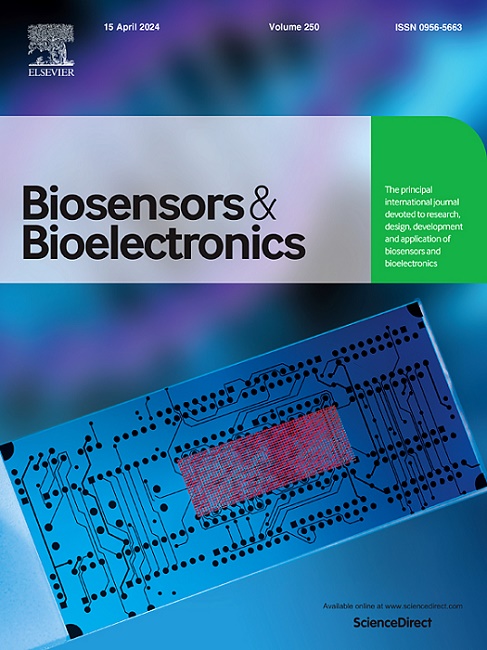Real-time cardiomyocyte contraction sensing via a neo-flexible magnetic sensor
IF 10.5
1区 生物学
Q1 BIOPHYSICS
引用次数: 0
Abstract
Assessing heart disease and evaluating drug-induced cardiotoxicity require a deep understanding of the contractile properties of cardiac tissue, particularly at the level of individual cardiomyocytes. Traditional methods for measuring cardiomyocyte contractility present several challenges, including limitations in real-time detection, complex and costly sensing platforms, and biocompatibility issues. To address these challenges, we introduce an innovative magnetic sensor that utilizes a flexible coil cantilever, pioneering the application of electromagnetic induction for detecting cardiomyocyte contractility. This marks the first time such technology has been deployed in typical laboratory settings with straightforward configurations. When cardiomyocytes are cultured on these coils and subjected to a static magnetic field, their contractions induce oscillations in the coils, generating an electromotive force that converts mechanical pulsations into electrical signals. This advanced platform enables long-term, real-time monitoring of cardiac functional characteristics, including contractility, beating rate, and rhythm. It also enables the quantitative assessment of cardiovascular dynamics, such as in response to drugs like isoproterenol and verapamil. Offering a uniquely simple, stable, and efficient method for evaluating drug-induced cardiotoxicity, this novel detection platform underscores the transformative potential of flexible magnetic sensors in real-time cellular detection applications.
通过一种新型柔性磁传感器实时感知心肌细胞收缩
评估心脏病和药物诱导的心脏毒性需要深入了解心脏组织的收缩特性,特别是单个心肌细胞的收缩特性。测量心肌细胞收缩力的传统方法面临着一些挑战,包括实时检测的局限性、复杂昂贵的传感平台以及生物兼容性问题。为了应对这些挑战,我们推出了一种利用柔性线圈悬臂的创新型磁传感器,开创了应用电磁感应检测心肌细胞收缩力的先河。这标志着此类技术首次在典型的实验室环境中以简单的配置进行部署。当心肌细胞在这些线圈上培养并受到静态磁场作用时,它们的收缩会引起线圈振荡,产生电动势,从而将机械脉动转换为电信号。这种先进的平台可对心脏功能特性(包括收缩力、跳动率和节律)进行长期、实时监测。它还能对心血管动态进行定量评估,例如对异丙肾上腺素和维拉帕米等药物的反应。这种新型检测平台为评估药物引起的心脏毒性提供了一种独特的简单、稳定和高效的方法,凸显了柔性磁传感器在实时细胞检测应用中的变革潜力。
本文章由计算机程序翻译,如有差异,请以英文原文为准。
求助全文
约1分钟内获得全文
求助全文
来源期刊

Biosensors and Bioelectronics
工程技术-电化学
CiteScore
20.80
自引率
7.10%
发文量
1006
审稿时长
29 days
期刊介绍:
Biosensors & Bioelectronics, along with its open access companion journal Biosensors & Bioelectronics: X, is the leading international publication in the field of biosensors and bioelectronics. It covers research, design, development, and application of biosensors, which are analytical devices incorporating biological materials with physicochemical transducers. These devices, including sensors, DNA chips, electronic noses, and lab-on-a-chip, produce digital signals proportional to specific analytes. Examples include immunosensors and enzyme-based biosensors, applied in various fields such as medicine, environmental monitoring, and food industry. The journal also focuses on molecular and supramolecular structures for enhancing device performance.
 求助内容:
求助内容: 应助结果提醒方式:
应助结果提醒方式:


